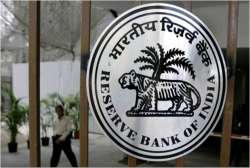Despite RBI repo rate cuts, consumers yet to benefit as transmission is slow
In a bid to boost demand and growth, the RBI's Monetary Policy Committee (MPC) on Wednesday announced 35 bps cut in repo rate, which eventually is expected to be transmitted to retail loans. However, a look at the recent past shows that rate cuts by the central bank are transmitted further to the end-consumer in a proportionate manner.

In a bid to boost demand and growth, the RBI's Monetary Policy Committee (MPC) on Wednesday announced 35 bps cut in repo rate, which eventually is expected to be transmitted to retail loans. However, a look at the recent past shows that rate cuts by the central bank are transmitted further to the end-consumer in a proportionate manner.
Prior to the latest cut of 35 basis points (bps) in repo rate the MPC had already reduced it by 75 bps since February 2019. But, according to Reserve Bank Governor Shaktikanta Das, bank rates have declined by only 29 bps so far.
"The weighted average call money rate WACR has declined by 78 bps, market repo rate has come down by 73 bps....banks on the other hand have reduced their interest rates on fresh rupee loans by only 29 basis points so far, during February to June," Das told reporters here after the monetary policy meet.
He, however, added that the consultation with both private and public sector banks indicated that they are taking steps to lower interest rates in a progressive manner.
Since April 2016, all loans sanctioned by banks including car and home loans are linked to the bank's marginal cost of funds based lending rate (MCLR). A lower MCLR effectively means a lower interest rate and reduction in bank's MCLR benefits all car loan and home loans borrowers.
Market players too hope that banks would in a swift manner transmit the rate cuts.
Umesh Revankar, MD and CEO of Shriram Transport Finance, said: "We welcome the RBI's decision of 35 bps cut. This rate cut is in line with our expectations in current economic conditions. With a total of 110 bps cut in 2019, we expect the banks to be in a comfortable position to do the transmission of the same.
"As the economy is going through a downturn, largely on account of falling demand and consumption, the latest repo rate cut to 5.40 per cent, is expected to boost sentiments. But it would only happen once consumers get the ultimate relief with lower rates."
For a common man, a middle-class consumer, a house and a car are among the most dreamt possessions in life, and these two amenities are at the heart of the banks' lending business.
Amit Modi, Director, ABA Corp said: "Rather than making sure that consumers are offered reduced interest rates on home loans which will result in lower EMIs, there is still an ongoing tendency of cushioning the bottom lines by the banks, which ultimately turns out to be counterproductive to the move itself.
"The Monetary Policy Committee has once again maintained an accommodative stance. We hope that the banks are also more accommodative in their stance towards the home buyers aspirations."
In another major development, country's largest bank State Bank of India (SBI) cut its benchmark lending rates by 15 basis points across all tenors, shortly after the central bank slashed interest rates by a larger-than-expected 35 bps to boost the economy in a solidarity to support growth.
It is expected that other banks too would follow suit and the consumers would take a sigh of relief.
Also Read | IndiGo to launch direct Kolkata-Silchar flight on September 20